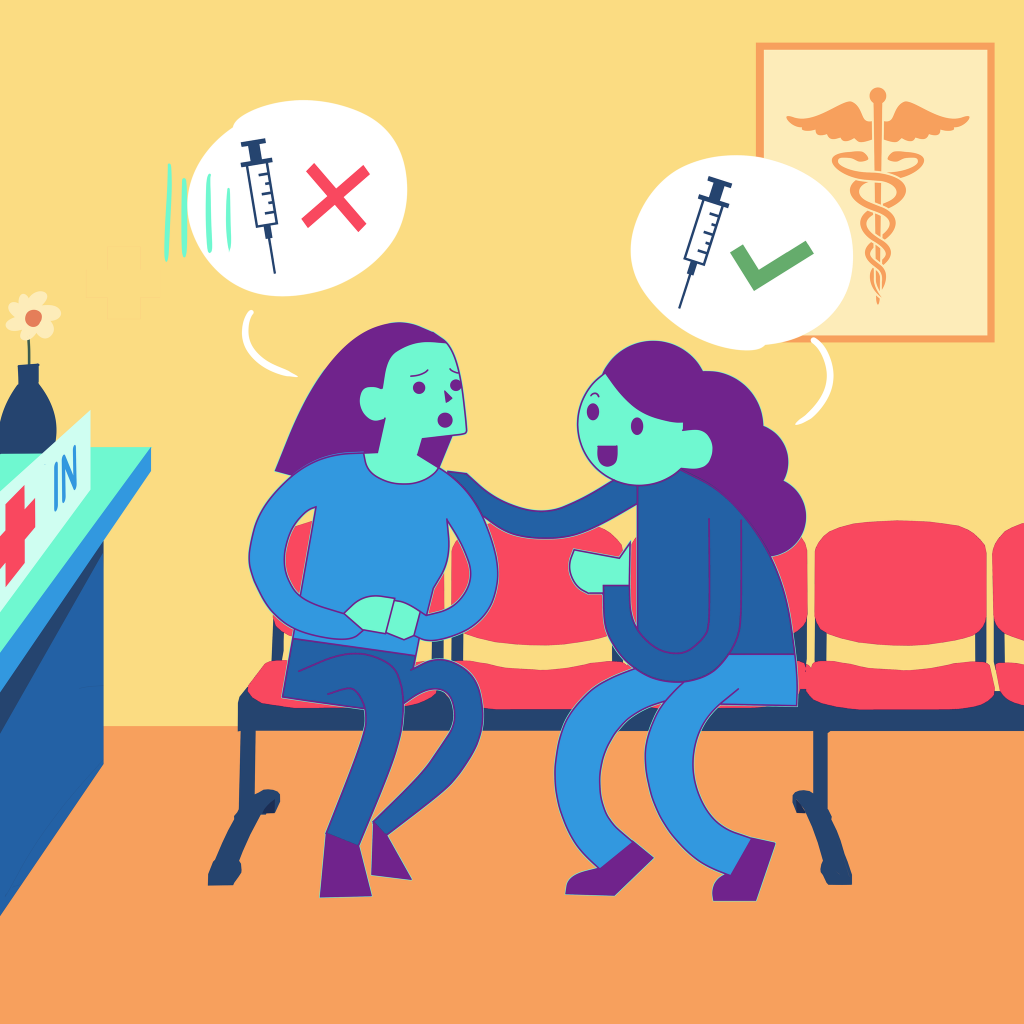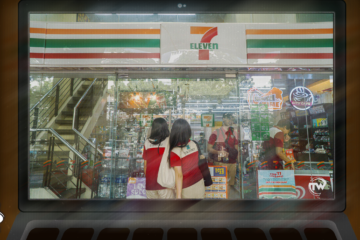
THE GOVERNMENT has sought to vaccinate at least 70 percent of its total population to achieve herd immunity—the perceived solution against the untamed pandemic—when mass COVID-19 vaccination started last March.
From March to September, a total of 21.3 million Filipinos or 19.59 percent of the whole Philippine population were fully vaccinated against COVID-19.
Meanwhile, 24.2 million Filipinos or 22.23 percent of the whole Philippine population received their first dose of vaccine.
However, widespread misinformation and controversies regarding vaccines still lurk on the internet, prompting several Filipinos to refuse to get inoculated. This is a roadblock in the government’s goal of achieving herd immunity.
Among them is Carlito Manalo*, a sales agent, who believes vaccine efficacy is not ensured due to its urgent development.
“Kasi nga ‘di ba ‘yung vaccine hindi natin sigurado kung safe… kung okay nga po talaga siya kasi hindi siya kumbaga na-testing nang matagal (It’s because we are not certain whether it is safe or not as it has not undergone exhaustive testing),” Manalo said.
Manalo’s negative beliefs about vaccines were primarily based on his speculations influenced by hearsays being posted on social media.
“Marami nang kumakalat sa Facebook [at] Telegram na hindi siya nakakagaling (Several posts were circulating on Facebook and Telegram that vaccines are ineffective),” he stated.
The US Center for Disease Control and Prevention (CDC) claimed that experts have been studying the coronavirus for years, thus explaining the COVID-19 vaccines’ quick development.
“Scientists have been working for many years to develop vaccines against coronaviruses. The knowledge that was gained through past research on coronavirus vaccines helped speed up the initial development of the current COVID-19 vaccines,” CDC explained on their official website.
Although these vaccines were rapidly developed, CDC ensured that they still underwent the usual three-phase clinical trial before granting the Emergency Use Authorization (EUA).
Scientists conducted clinical trials for COVID-19 vaccines which involved tens of thousands of volunteers of different ages, races, and ethnicities.
CDC added that clinical trials for vaccines compare outcomes between people who are vaccinated and people who are not, such as how many people get sick. They assured, however, that it showed no serious safety concerns within 8 weeks following vaccination.
Several experts from CDC have also said that the vaccines aim to decrease the chances of people getting a severe COVID-19 infection. They also acknowledged that people who have already been vaccinated can still get infected, albeit with less severe symptoms.
Similar to Manalo, Linda Beltran*, a barangay police officer, is also hesitant about getting the vaccine after her neighbor—a senior citizen—experienced itchiness and rashes after having the second dose.
“Dito kasi sa barangay, mayroong [senior citizen] na nabakunahan [at] nagkaroon ng rashes after nun […] kinati-kati hanggang sa [natuyo ang balat] sa pagkakati tapos nagsugat-sugat (Here in our barangay, there was a senior who was vaccinated and had rashes afterwards. It itched until the skin dried and wounded-up),” Beltran said.
She added that her neighbor sought help from a doctor, but the doctor clarified that the skin condition was not caused by the vaccine.
Beltran, however, remains adamant that the vaccine was still the cause of the senior citizen’s itchiness and rashes.
“Bakit nung hindi pa siya nababakunahan, hindi pa lumalabas [yung galis], pero nung nabakunahan siya, doon na lumabas yung galis niya? (Why is it that when he wasn’t vaccinated, he did not have these rashes. But when he was vaccinated, that’s when his rashes appeared?),” she questioned.
What do medical experts say?
Nicole Cua, a resident physician in training in Quezon City public hospital, said that the side effects of the COVID-19 vaccine include pain at the injection site. This is similar to the side effects of the flu and anti-tetanus vaccines.
“Each vaccine has its own side effects that are particular to that vaccine, but based on what I experienced, it’s just the same old side-effects,” she said.
Accordingly, CDC said that the common COVID-19 vaccine side effects include arm pain and swelling at the inoculation site. Tiredness, headache, fever, and muscle pains can also be experienced days after the vaccination.
But when asked if COVID-19 vaccines could cause severe rashes, Cua said she was not aware of this. The physician suspected that the patient “might have just eaten something.”
“You cannot pinpoint the allergic reaction of the patient to the vaccine. There’s no way of linking that unless you do skin testing on the patient,” she explained.
Findings from the CDC suggested that allergic reactions due to COVID-19 vaccines are rare and have occurred in approximately 2 to 5 people per million vaccinated in the United States.
CDC added that those who experienced either a severe or non-severe allergic reaction should not receive a second dose.
For those who are experiencing rashes around the injection site after the first dose, CDC recommended that they receive a second dose. However, they must inform the vaccine provider beforehand.
“[We continue] to closely monitor the safety of COVID-19 vaccines. If scientists find a connection between a safety issue and a vaccine, FDA and the vaccine manufacturer will work toward an appropriate solution to address the specific safety concern,” the CDC added.
Similarly, a July 2021 study published by The Lancet, a general medical journal based in the United Kingdom, found that the vaccine could cause several mild effects such as headache and fatigue, either after the first or second doses.
The study also revealed that among those inoculated with Pfizer BioNTech, less than 25 percent of the participants had experienced fatigue and headache after the first dose while less than 15 percent after the second dose.
This is a much lower rate than those recorded during the third phase with 34-47 percent of the participants who experienced fatigue while 25-42 percent experienced headaches, it added.
Meanwhile, the phase 2 and 3 clinical trials for the AstraZeneca vaccine showed a decrease in the experienced side effects. Out of the 345,280 individuals aged 18-55 who received the first injection, 33.7 percent of them had experienced any systemic side effects such as fatigue, headache, and nausea.
The study also observed that there was a “risk reduction” after 21 to 44 days of inoculation.
‘I will only get vaccinated if…’
Manalo and Beltran said that they witnessed how the COVID-19 pandemic affected and threatened their daily living. These have not influenced them to get vaccinated anytime soon.
However, they might consider getting inoculated if the vaccine is effective for others.
“Basta makita muna natin kung talagang maganda ang epekto [ng bakuna] sa katawan, walang side effects (Let’s see first if the vaccine has a really good effect on the body, no side effects),” Manalo said.
“Magpapabakuna na ako kapag ‘yung mga nabakunahan is hindi namatay after a year (I will be vaccinated when those who have got the jab did not die after a year),” Beltran said.
Cua, however, advised the people to get vaccinated, even if it will only last for a certain time, as this would be “better than to have nothing at all.”
“Parang sayang ‘yung opportunity na sana mild na lang yung symptoms mo dahil vaccinated ka, pero naging severe pa tuloy kasi you opted na ‘wag na lang kasi bababa rin naman ‘yung antibodies (It seems like a wasted opportunity that your symptoms could have been mild if you were already vaccinated, but it became severe since you opted not to because you assumed that your antibodies will be weakened),” she said.
She also advised the public to not wait for herd immunity as it is impossible to achieve by just looking at how the virus is “fast replicating.”
“Kailangan magpa-vaccine ‘yung mga tao para at least we have some sort of immunity (People need to be vaccinated so that at least we have some sort of immunity),” she added.
Educating vaccine-hesitant people
University of Santo Tomas (UST) post-graduate intern Robert Dominic Gonzales said that ‘personal-level and community-level factors have influenced vaccine hesitancy among people.
“There are several causes of vaccine hesitancy which may be person-specific (previous experiences with vaccines, relationship with the healthcare system) or community-level factors (social norms, external factors, fake news, vaccine policy),” Gonzales told The Flame.
Gonzales explained how education is the best weapon to tackle vaccine hesitancy, boost vaccine confidence, and combat the spread of fake news.
He added that apart from educating the people, a community-based approach must also be applied to determine other factors.
“As responsible citizens of this country, we need to be able to reach out to many and be proactive when seeing fake news. This can start even within our families, relatives, friends, and own barangays,” he said.
Filipinos optimistic about the COVID-19 vaccine
Gonzales, who also volunteers at the University’s vaccination site, added that despite the hesitancy, Filipinos are still optimistic about getting vaccinated as some line up a day before the vaccination centers open.
But the country’s limitation on vaccine supply may impede this, he added.
“The leadership of our national government and mismanagement in the Department of Health have been very evident right from the start of the pandemic,” Gonzales said, adding that the on-and-off lockdowns are also signs of poor control of disease spread.
He said that the people need a government that knows how to prioritize solving the pandemic, has a sense of urgency, and aims for scientific medical solutions.
“If only we have a government that supports the needs and cares for our healthcare force and the science and technology field, I am confident that we will get through this pandemic as [early] as possible,” Gonzales said. “As we say, solusyong medikal, hindi militar (medical solution, not military force),” he added.
‘Probe and put the statement to context’
In a series of tweets last Sept. 18, DZBB Super Radyo of GMA Network featured a group called Gising Maharlika which protested against vaccination and wearing of face masks since they believe that COVID-19 does not exist.
Many Twitter users have noticed that DZBB failed to fact-check the claims of the group.
For UST journalism instructor Ferdinand Maglalang, people who are against the COVID-19 vaccine have the right to be heard, yet he also said the media has the responsibility “to probe and put the statement in the proper context.”
“Meaning to say, anong evidence mo? Bakit ayaw mo magpa vaccine? Bakit ayaw mo ng lockdown? (What is your evidence? Why don’t you want to be inoculated? Why are you opposing the lockdown?),” Maglalang said.
Maglalang emphasized that these vaccines and health protocols are based on medical research, and refusing them can put at risk the public’s health and safety.
“It’s your right to protest against [these] lockdowns pero merong science, merong basehan, merong scientific evidence why lockdowns are being imposed,” he said.
Maglalang added that the role of the media during a health crisis becomes more significant as they need to critically challenge the government-imposed policies.
“The media needs to challenge government policies. Pinag-aralan niyo po ba yan? (Have you studied it?) Is it based on science? Is it based on medicine?” Maglalang said.
“[That’s why the] media should be able to be critical [and] should be probing government policies especially during the pandemic,” he added.
Other countries have started inoculating their citizens of booster shots but the Philippines is still holding on to its goal of herd immunity. F
*Names were changed as requested by the subjects for protection.
Editor’s Note: This article was originally published in Vol. 57, Issue No. 1 of The Flame. View the entire issue through this link.



